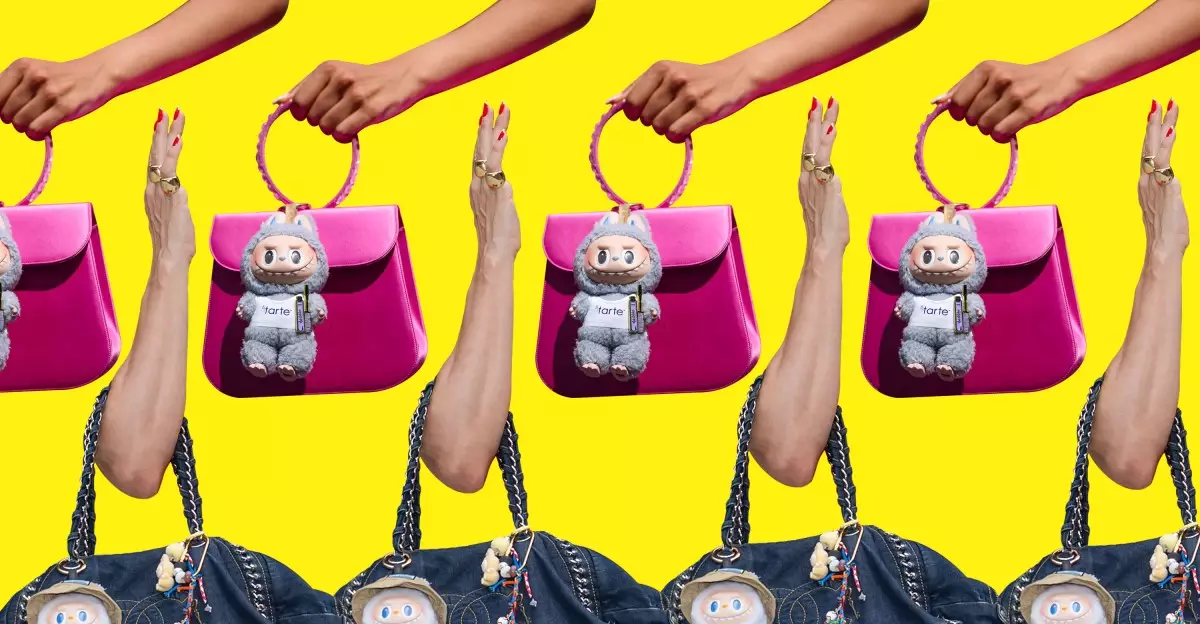What begins as a simple desire to own a cute figurine often devolves into an arduous digital gauntlet. In an era where online shopping is supposed to be convenient, some collectibles like Labubu have turned the process into an elaborate game of patience, skill, and luck. The myth of instant gratification is shattered as enthusiasts realize that acquiring these toys is less about purchase power and more about navigating a relentless digital battlefield. This paradox highlights a broader truth: the more difficult something is to obtain, the more coveted it becomes. Yet, beneath this allure lies a darker element—an addiction fueled by anticipation and the thrill of chance.
These collectibles have become emblematic of the current zeitgeist, where scarcity and effort elevate a toy beyond its physical form into a symbol of status, persistence, and perhaps a dash of madness. The tools and tips shared among enthusiasts reveal an unspoken understanding: real victory relies on mastering a complex ritual, a digital ritual more akin to a competitive sport than a simple purchase. The allure isn’t just in the toy but in the challenge itself—a challenge that many willingly subject themselves to, often at the expense of sanity and convenience.
The Digital Labyrinth: A Modern-Day Black Friday Chaos
Shopping for Labubu is less like a straightforward transaction and more like navigating a treacherous video game. The Pop Mart website, arguably designed to mimic Black Friday chaos, presents a confusing, fast-paced environment where every click could mean the difference between success and disappointment. The website’s interface simulates the frantic energy of knocking over display cases, where luck and quick reflexes determine who gets the coveted figures. It’s an experience that feels deliberately engineered to be maddening; a digital test of patience, strategy, and stamina.
Accompanying this chaos are countless tutorials and hacks circulated across social media platforms, particularly TikTok and collector forums. Some strategies—like toggling Wi-Fi or timing your taps—offer marginal improvements, but they don’t change the core difficulty of the process. For many collectors, it is a high-stakes game involving repeated attempts and emotional roller coasters. The practice becomes more than a hobby; it morphs into an addiction that hinges on fleeting moments of success. The reward, a tiny figure labeled “Hope,” embodies more than just a cute toy—it encapsulates hope, perseverance, and the thrill of the unknown.
The Dark Side of Collectibility: From Excitement to Gambling
Labubu’s popularity isn’t accidental. The thrill of unboxing a blind box toy taps into primal instincts—uncertainty, anticipation, and the allure of the rare. In many ways, it resembles gambling, where the outcome is purely a matter of luck, and the stakes are psychological rather than monetary (though sometimes the monetary stakes are significant). These toys have transformed from simple collectibles into commodities of obsession, with collectors willingly risking hours, mental energy, and even financial resources for a chance at the rarest figures.
The hype surrounding Labubu is fueled by the endless stream of viral unboxings, influencer tips, and TikTok livestreams. These only strengthen the image of scarcity and exclusiveness, feeding the illusion that with enough effort, one can secure a rare or coveted piece. Yet, behind the facade of fun lies a subtle commentary: the real value is in the journey—waiting, hunting, gambling—rather than the actual toy. The physical object becomes almost secondary; the primary currency is the adrenaline of the chase.
From Obsession to Cultural Phenomenon
Despite the frustrations, the obsession persists, driven by the psychological rewards of the hunt and the social validation from the collector community. Google Trends data suggest that interest in Labubu is at an all-time high, indicating that this phenomenon isn’t transient but an enduring cultural movement. The interface of social media and digital platforms turned what might be a niche hobby into a worldwide spectacle, where participation is less about the toy and more about the shared experience of hardship and triumph.
Eventually, the intensity may calm as the market stabilizes and the initial fervor diminishes. When that moment arrives, Labubu will simply be a small toy among thousands of others. But for now, the struggle—endless taps, waiting games, and the chaos of digital buying—constitutes a significant part of the appeal. It’s a testament to how modern consumer culture elevates the pursuit above the possession, making collecting about the journey itself and the stories built along the way.
The true fascination with Labubu is not just rooted in the figurines but in what they represent: a fascinating intersection of obsession, social dynamics, and the raw human desire for victory against all odds. Whether this mania is a fleeting trend or a permanent fixture in the landscape of collectible culture remains to be seen. But one thing is clear: until the frustration gives way to ease, the chase will continue, relentlessly, as a symbol of perseverance in the chaos of modern consumption.

